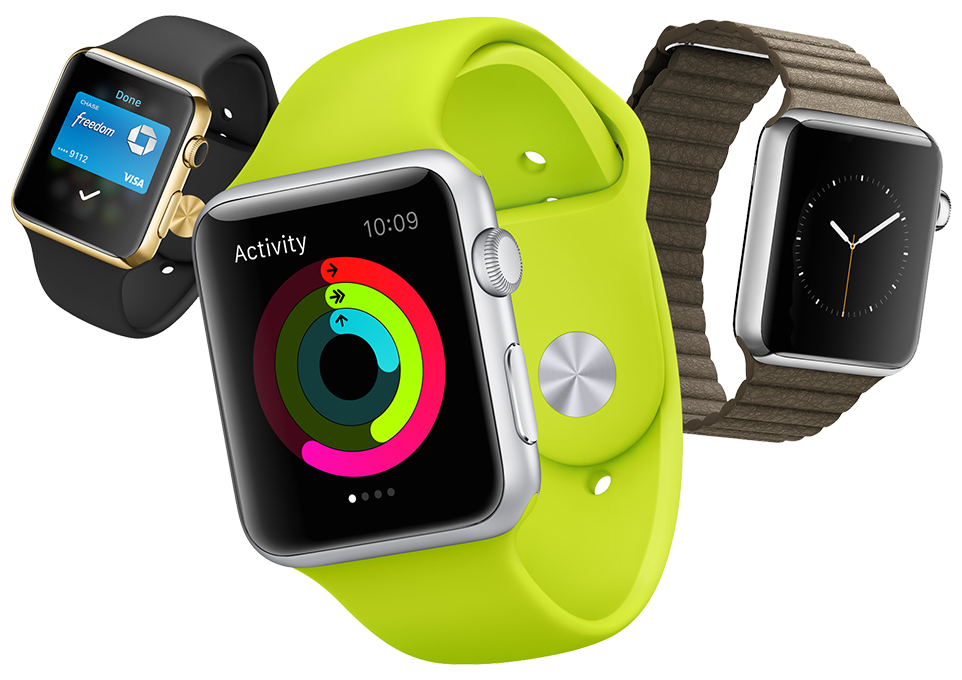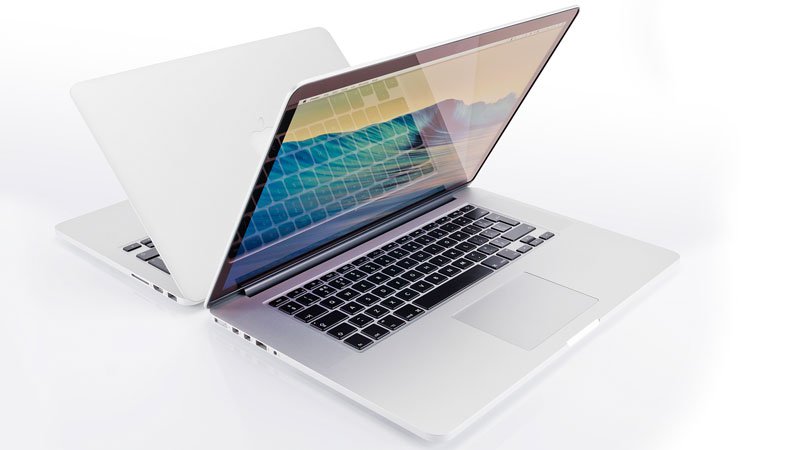Hours ago, Apple announced the release details for the highly anticipated Apple Watch.
Thus Apple enters the wearable device market. The Apple Watch was the big glossy marketing thrust of the event. It was not the only new product announcement, and when you study the combined message, you start to appreciate the journey that Apple has been on in recent times.
New Macbook Core Technologies
One of the new technologies that have enabled the Apple Watch is what Apple call ‘force click’. This technology is not exclusively in the Apple Watch since it is also to be available in the new 12-inch Macbook.
 In the technical specifications, it is mentioned that the new Macbook trackpad differs in physical behaviour such that the pad no longer clicks in. Quoting directly from the Press Release:
In the technical specifications, it is mentioned that the new Macbook trackpad differs in physical behaviour such that the pad no longer clicks in. Quoting directly from the Press Release:
MacBook also features the all-new Force Touch trackpad that brings a new dimension of interactivity to the Mac. The new trackpad features built-in force sensors that allow you to click anywhere and haptic feedback that provides a responsive and uniform feel. You can even customize the feel of the trackpad by changing the amount of pressure needed to register each click. The Force Touch trackpad also enables a new gesture called Force Click, a click followed by a deeper press, for tasks like pulling up the definition of a word, quickly seeing a map or glancing at a preview of a file.
This is in essence the same method of user interface interaction on the Apple Watch, which on that product release page is referred to as Digital Touch. A reverse output technology that the Apple Watch introduces is the taptic engine which is the functional equivalent of the vibration notification alert on an iPhone or iPad device; unique to the Watch since the device will be worn and in direct contact with the user’s wrist.
There is a brief mention that the new 12-inch Macbook is but the first in a new generation of refreshed Macbooks – coupled with the Retina Display, USB-C connectivity and the terraced battery design, Apple continue to innovate and lead the way in packing denser and denser chip-sets into the ever shrinking physical footprint of their computing devices.
Another key enabling technology for the super thin and light weight Macbook is the CPU which utilises the Intel Core M processor, designed to not just deliver performance, but with minimum weight. One of the interesting things about the choice of CPU is that the Apple variant falls beyond the technical specifications listed on the Intel website of the three Core M processor products that have been available up until now. The Intel technical details and reviews of the existing Core M product line suggested that Intel had released this new generation of processors which helped to address the previous issue of limited and low battery life, whereas the Core M took great strides in addressing the concern.
This new design Macbook follows the design concept of the Macbook Air in simplifying and reducing the number of available ports. In part, the USB-C standard combines power, display, device connectivity and data transmission all in one. For power users, this will be a big constraint.
Apple Watch
My first reaction to the Apple Watch is that their product line-up and approach appears to be intentionally different to the previous Apple philosophy of having simplicity in the number of models available. Apple boasts 20 different models within the collection. However, when you look closer at the various models, really these are permutations on three core variables:
- Models: standard, Sports, Edition (premium)
- Size: 38mm or 42mm
- Case material: stainless steel, 18-karat Rose Gold or 18-karat Yellow Gold
- Bands: many more variations, but at a top-level, the Sports plastic, leathers, link bracelet or modern straps
The wide line-up signifies Apple is keen to cover a wide market base in the initial up-take. One key limitation is that in order to utilise an Apple Watch, the purchaser needs to own an iPhone 5 or later. If ever there was a more blatant synergy and effort to drive up other product adoption, this is it. Only time will tell if the Apple Watch has a positive effect on the revenue streams of current in-market iPhones…
For me personally, I became aware at the start of 2015 that the Apple Health app had started to track my movements via my iPhone 6. Since I also use a Fitbit device, this presented an opportunity to compare the two devices. The general observation from comparing devices led me to conclude that the Fitbit device was more accurate in measuring steps because I wore it as a clip-on to my pants pocket. This consistency enables a more precise measurement whereas my iPhone is never in the one spot/position – sometimes my phone is my my pocket, most of the time I hold it whilst walking, and when I am sitting down the iPhone would likely be placed on the desk/table where I am. In this way, I can see the benefit of having a wearable Apple Watch that tracks and synchronises with the iPhone Health app to deliver a more consistent and accurate monitoring of walking activity. The Fitbit offers simple pedometer functionality whereas the future combination of iPhone + Watch would likely create a much more sophisticated health monitoring device.
One of the biggest challenges facing the adoption of Apple Watch would be the fact that people like myself gave up wearing a watch many years’ ago when the iPhone offered the ability to replace and consolidate the functions of a basic watch. In one sense, to start wear an Apple Watch would be to convince people like myself that there is much more value to wearing the Apple Watch. Indeed, this is how Apple markets the experience – that Apple Pay, Apple Health and other functions make the whole Apple ecosystem a greatly enhanced and superior experience to the one back in 2008 when smartphones were first popularised.
Apple Watch is going to challenge fitness tracking devices like Fitbit. In 2014, the announcement alone of Apple Watch saw Nike hold off on launching their own fitness device, and it is likely that they will partner with Apple. It is not all beds and roses though; Apple have intentionally closed off parts of the Apple Watch to third party developers since having the touchscreen is the number one reason that battery life remains a weakness in the Apple Watch product specification. Indeed, with a battery life on 18 hours, based on a standby mode of operation suggests Apple may need to yet return to the drawing board.
Apple also revealed that an update to iOS 8 with be released in April to coincide with the launch of Apple Watch, thereby delivering a key component of the Apple Watch experience to millions of potential Watch buyers. No doubt this tactic is intended to entice and show the potential uses of an Apple Watch. iOS is intended to control the configuration of Apple Pay on the iPhone whilst a secure token synchronizes credit card payment details between watch and phone. According to release notes, once the Apple Watch has been setup, a wearer won’t even need their iPhone with them to make a payment transaction. Whether or not features and convenient customer experiences like this are enough to sway the millions of iPhone users to purchasing an Apple Watch is yet to be seen.
Apple TV
Having now sold some 20 million Apple TVs, it was a little disappointing to hear that the only new thing for the Apple TV is a price drop since the HBO Now service is restricted in essence to the US. One person within a community of church media technicians made the comment that this price drop would be highly beneficial to churches who could go out and expand their footprint of Apple TV units throughout a church site.
Apple TV has a lot more untapped potential so when Apple decides to build its home entertainment hub, there will be even more opportunities for exposing greater audiences to the Apple ecosystem.

You must be logged in to post a comment.